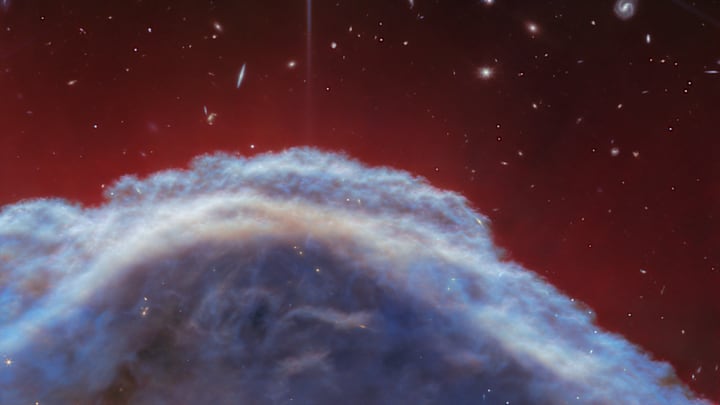With a silhouette that reflects its name, the Horsehead Nebula is one of the most iconic features in our galaxy. Now astronomy fans can see a clearer picture of it than ever before. According to NASA, the James Webb Space Telescope has captured the nebula in unprecedented detail.
The James Webb Space Telescope—which is jointly operated by NASA, the European Space Agency, and the Canadian Space Agency—used its near-infrared camera, or NIRCAM, to record the view above. It shows the upper “mane” of the horsehead, which actually consists of clouds of cold, molecular hydrogen. In a second image taken by the JWST’s mid-infrared instrument (MIRI), the indigo swirls of stardust in the same cloud are even more apparent.

You can get a unique perspective on the images in the zoom-in video below.
Nebulae are made from the debris left behind by dying stars. The Horsehead Nebula, also known as Barnard 33, is located 1300 light-years from our planet in the constellation Orion. A young star near the system illuminates the dark, dense matter. As lighter gases have dispersed, masses of dense gas have become more prominent, including the horse-shaped column that gives the cloud its name. In roughly 5 million years, experts predict that even the nebula’s heaviest materials will have eroded completely.
After forming in the aftermath of exploding stars, many nebulae give birth to new stars. As the materials grow denser, they may eventually collapse under the weight of their own gravity. The heat from this violent collapse often creates the hot core of a brand new star. Images like the ones above have a lot to teach astronomers about the ways interstellar matter evolves before, during, and after a star’s life cycle.
